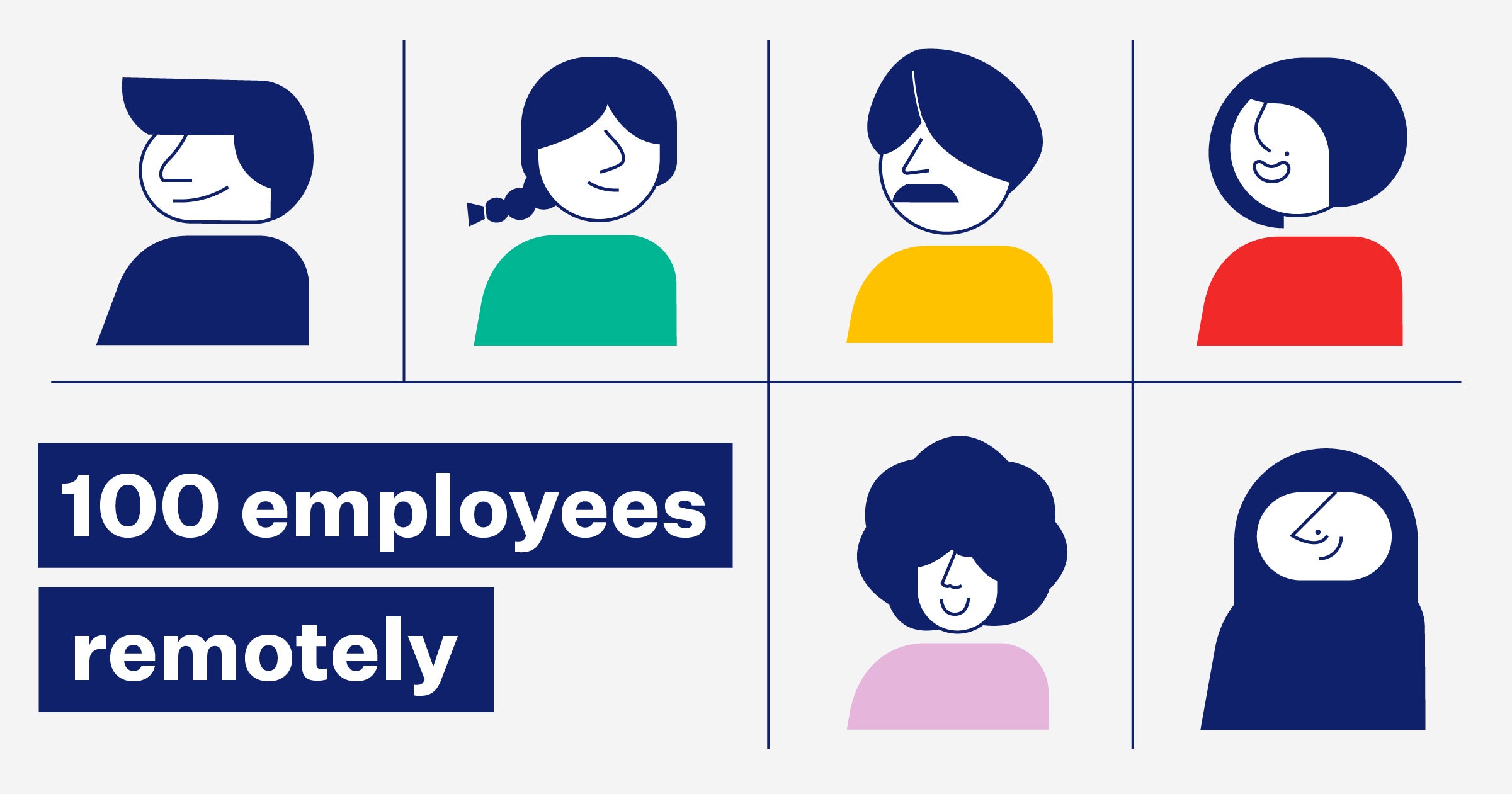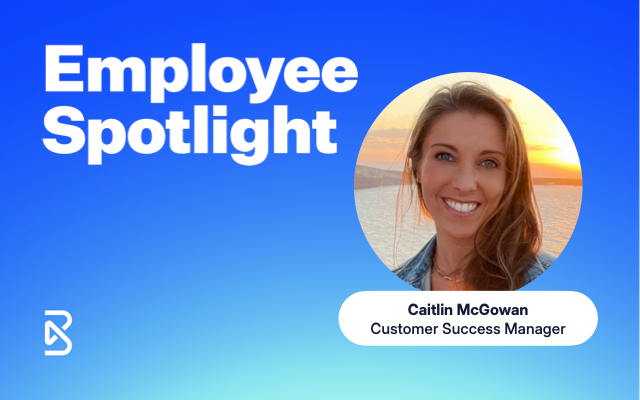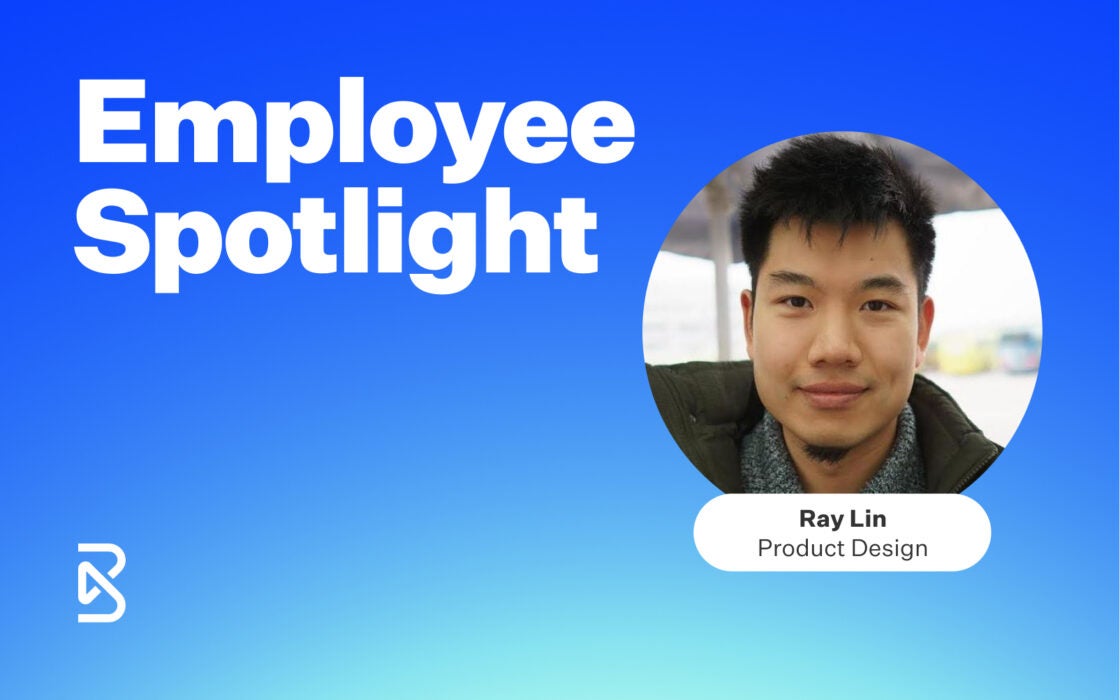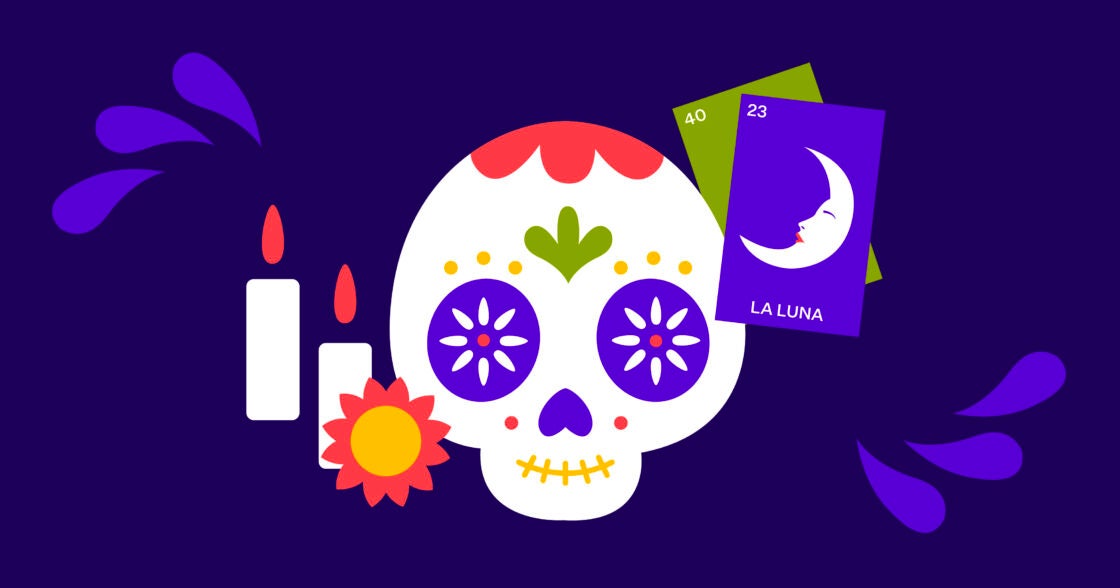August 28, 2020 in Blendkind
Welcoming during WFH: Lessons learned from remotely onboarding 100+ employees

We are thrilled to be celebrating our 100th* new hire.
Depending on the size of the company, 100 new hires may be a momentous occasion or a typical week. In any case, it’s a milestone worth acknowledging.
But what we are celebrating today is something slightly more unique, very much reflective of the time, and honestly kind of hard to believe: 100 new hires (*and counting) since we implemented our mandatory work-from-home (WFH) period on March 6.
Reflecting back on these past months and what it must have been like for the 100+ new members of Blendkind to join Blend remotely, I was struck by how complex the onboarding process really is, especially when we are forced to rely on digital connectedness. In the end, what I keep coming back to is how lucky I am to work with a group of people so devoted to ensuring we all feel part of one team. Let’s take a quick look at how that happens in practice.
“Regardless of it being remote due to current circumstances, Blend’s onboarding experience was incredible and better than any other company I have worked for.”
Ordie Page
Software Engineer at Blend
Transitioning to a new way of welcoming
Early on after the WFH decision, our team posed a series of daunting questions: How do we maintain our commitment to providing an excellent onboarding process? How can we ensure each employee feels welcome when we’re not there to do so in person? How can we offer new hires the tools and connection they need for success starting on day one?
Luckily, we were starting with a strong foundation, since we have long understood the importance of getting things off on the right foot. Not only can strong onboarding processes improve retention rates by around 80%, they also directly impact long-term business goals: 2.5x revenue growth and 1.9x profit margin compared to less effective methods. We’re proud to say that our onboarding program has a 95/100 score in our Culture Amp survey.
Historically, we have offered in-person onboarding every other Tuesday at our SF headquarters. On day one, new hires learn about Blend’s culture, get their laptop set up, receive relevant information to begin contributing on day one, head on a tour of our beautiful office, enjoy lunch with their team, and then find their desk full of Blend swag. It’s a bit of a whirlwind.
When mandatory WFH started, hiring and onboarding luckily did not taper, which meant we needed to very quickly convert our robust in-person onboarding program to the digital world.
I won’t pretend that things were anywhere close to perfect from the start. But based on the responses we’ve gotten from new hires, we’ve managed to create something that has worked well. We will continue iterating, developing a system that is ready to onboard the next group of 100 and beyond.
“The focus on success despite the inconveniences of the situation was palpable. It made it clear to me from day one that Blend is indeed a special place.”
Steve Paulo
Software Engineer at Blend
What we’ve learned remotely onboarding 100 employees
Reflect your priorities in your agenda.
We consciously aim to make “connection” a priority outcome on day one. Our schedule of activities is designed to support engaging with one another, with new roles and responsibilities, with the broader Blend team, and with our collective principles. To emphasize the importance of connection, senior leadership host a small-group chat so that our new teammates can really start getting to know Blend on day one. Although we are limited in how we can connect, we prioritize the impact and resonance of the opportunities we do have.
Video meetings can be wacky — embrace that.
At Blend we want to create a brave space where people feel comfortable. We let all employees know that everyone is welcome on video meetings — pets, kids, roommates, partners, you name it. Staring in silence may be comfortable for an extravert facilitator but may be incredibly uncomfortable for others. We recommend having some light-hearted questions to ask the entire group or prompt in break out rooms to help people get to know each other. A few of our favorites are:
- What was your first concert?
- What’s been your favorite quarantine dish you’ve cooked or ordered?
- What is a project you’ve worked on during this time?
Swag makes folks feel like they’re part of the team.
Physical objects — like gifts, swag, or even essential office supplies — offer a tangible connection during a process that can feel digitally disconnected. The first swag new hires receive at Blend is the “New Hire Box,” which is a custom box sent after the offer is confirmed, filled with a hat, chocolate, an enamel pin, a handwritten welcome card, and socks. On day one, new hires’ desks typically have a (very popular) crewneck sweatshirt, mug, coaster, pen, journal, and stickers waiting for them, but we now ship that box directly to our new teammates. As of today, all of our swag shipments are back up and running, but while the warehouse was closed, we got creative and snail mailed stickers and a handwritten note to every new hire.
Ask for feedback and iterate.
We send every new hire class a Culture Amp survey asking about their day one remote experience. Based on this feedback, we’ve refreshed features that weren’t working and emphasized those that were overperforming. These range from technical changes, like creating a knowledge management base and increasing logistics details in the initial email, all the way to the creation of new sessions like our extra-popular “meet the leadership team.” We’ve also recently added a short breakout room session with two new hires in each room so they connect and have a new hire buddy going forward. But we aren’t going to sit back now — ongoing feedback and re-evaluation allows us to continually improve our processes.
Help employees feel welcome even after day one.
In the office, we usually have internal monitors announcing new hires for that week, and new hires eat lunch with their team. As we’ve shifted to the work-from-home model, we now invite new hires to introduce themselves at our weekly all hands meeting (not required). We created a #blend-new-hires channel to keep the new hire community connected and provide a space to ask any questions.

Check out our checklist for making onboarding (and each day after) a great experience
Looking ahead while remaining present
As we’ve shifted to remote onboarding, we’ve been reminded of the importance of building community, human connection, and setting employees up for success. We remind employees that mental health is our top priority during this time (here’s a quick reminder to take care of yourself).
This is a hard time for everyone and an especially odd time to onboard at a new company —and the day one onboarding is just the beginning.
I work closely with Blend’s people managers to ensure they are looped in to the process, ensuring there is a smooth handoff to team introductions and team-specific onboarding. The hiring manager onboarding Slack channel offers an additional space for our community to support one another.
Within a new hire’s first month, they will also attend Blend University, Blend’s deeper dive into the organization. New hires will hear from leaders, subject matter experts, and many people across the organization to understand how each team fits together and how their work will impact the future of Blend.
I’m looking forward to onboarding even more people at Blend, and while I can’t wait to meet people in person, I continue to make the most of welcoming new hires in this virtual world.
Find out what we're up to!
Subscribe to get Blend news, customer stories, events, and industry insights.


